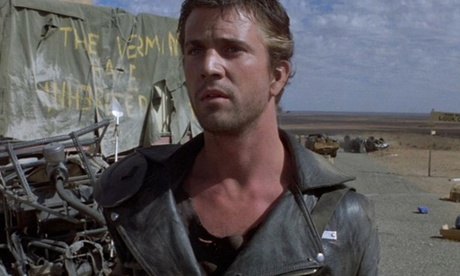
Mad Max 2: The Road Warrior marked the second time audiences experienced Mel Gibson in devil-may-care black leather, stomping across parched dystopian landscapes populated by heathens, drifters and strange-looking futuristic vehicles.
His big screen debut two years earlier was a remarkable success. It put Gibson on the map, established director George Miller as a major emerging talent and drew unprecedented cost-to-profit dividends.
Mad Max was made on such a low budget (about $350,000) and generated such a huge box office windfall (about $100m worldwide) that for a long time it was cited by the Guinness Book of Records as the most profitable feature film in history. That title was eventually claimed two decades later by found footage mock-doc The Blair Witch Project.
Filmed gonzo style – with slabs of beer given to contributors in lieu of money, and an art director who literally stole props – there was something rare and special about the way the original Mad Max ripped up the tarmac and burnt an indelible imprint on to popular culture.
But it is 1981's Road Warrior, shot with a much larger budget – about 10 times the original – that is rightly regarded as the jewel in the trilogy’s crown. It was not just a more popular film, currently listed as the 22nd most successful production at the Australian box office, but a vastly superior work.
All these years later Road Warrior moves like a bat out of hell and stands alone – like Max lit against a crimson sunset – as a foot-to-pedal road movie without comparison. The plot isn’t sophisticated but, given the cyclonic energy with which Miller moves images, characters and set pieces, it doesn’t need to be.
The Mad Max trilogy concluded with Beyond Thunderdome in 1985, which featured a delirious performance from Tina Turner as an evil queen. Structurally the series bears similarities to the original Star Wars movies, which were released in the same period.
Like 1977's A New Hope, it started strong with Mad Max. Like 1980's The Empire Strikes Back, Road Warrior extended the film's universe in dramatically and technically interesting ways. Like 1983's Return of the Jedi, Mad Max: Beyond Thunderdome digressed into derivative exotic settings. Hopefully the similarities end there and Mad Max: Fury Road – the belated fourth instalment, slated for release mid-2015 – won't trigger comparisons to the ill-fated Star Wars prequels.
Voiceover narration overlaid on to a black-and-white newsreel sets the scene for Road Warrior, based in a grim future where civilised society has been replaced by a wasteland of people either fighting for fuel or protecting their supply.
“The gangs took over the highways, ready to wage war for a tank of juice,” the narrator says. “And in this maelstrom of decay ordinary men were battered and mashed. Men like Max.”
A nomad wandering across a landscape perverted by lawlessness and despondency, Max, who in a former life was a police officer, meets a flamboyant bug-eyed misfit Gyro Captain (Bruce Spence). He is then introduced to a camp of desperate people harangued by an evil overlord, a buff, mask-clad, Bane-like villain called Humungus (Kjell Nilsson). As one character puts it, the film is about war and survival. Almost one third of it is devoted to an epic chase scene involving Max, a semi-trailer and an army of highway ruffians.
Thirty minutes in there is a magnificently bizarre sequence in which Humungus, seeking the camp’s oil, addresses the crowd while two victims are tied to the front of one of his henchmens’s cars, positioned like a horrible alternate take from Peter Weir’s The Cars That Ate Paris. The scene culminates with a classic line. Slouched back, observing the locals argue about whether to leave or stay and fight, Max says: “You want to get out of here? You talk to me.”
In director Mark Hartley’s 2008 documentary Not Quite Hollywood, which chronicles the perverse highs and pulpy lows of Ozploitation cinema, Quentin Tarantino remarked that Australian film directors “manage to shoot cars with a fetishistic lens that just makes you want to jerk off”.
Mad Max 2 is the sort of film he was talking about. Miller directs scenes of hell-for-leather roadside anarchy with galling flair, bringing together a dream team of collaborators – from the gritty cinematography of Dean Semler (who also shot Phillip Noyce’s classic Dead Calm) to composer Brian May’s pulse-pounding score.
Time hasn't diluted The Road Warrior's impact. Decades later it still comes on like gangbusters, offering a visceral oomph quite unlike anything else.

